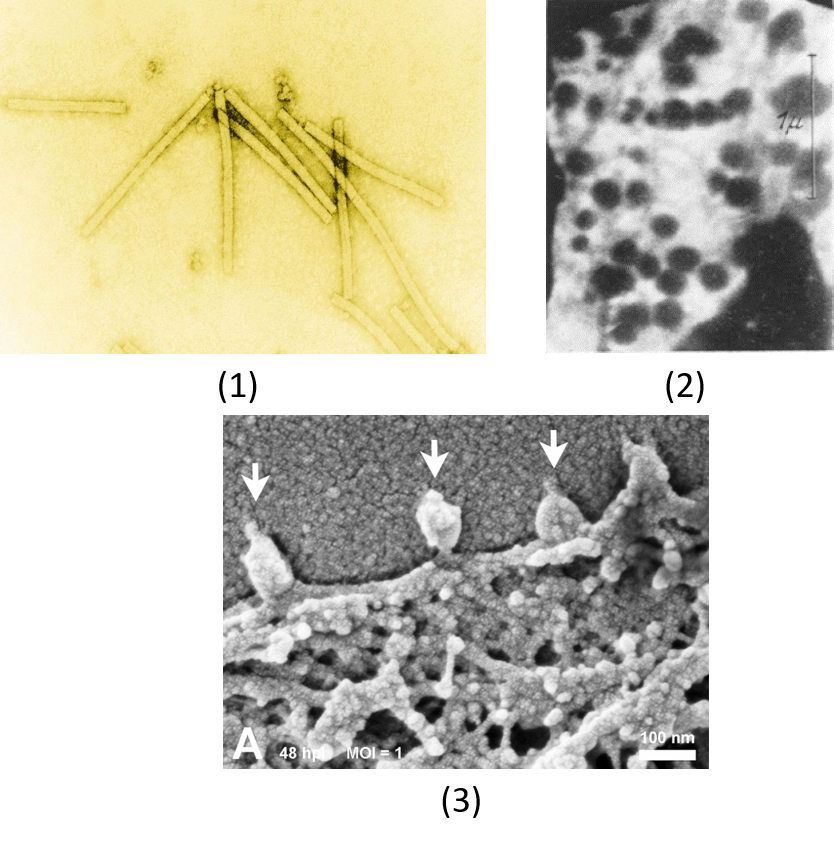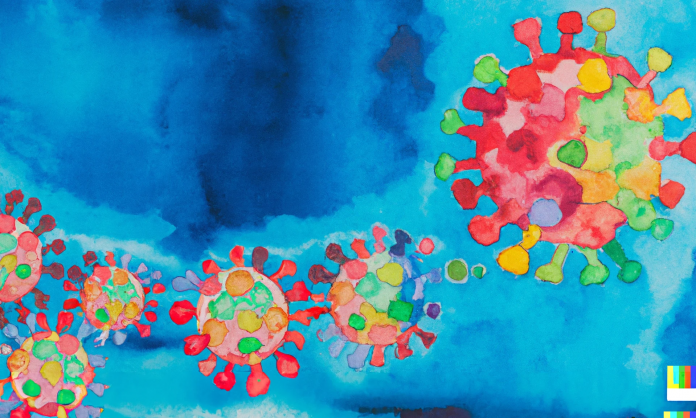Viruses – the all-elusive, ever-feared, scientifically fascinating organisms, are as diverse in their forms as they are in the hosts that they infect. As among the smallest organisms that inhabit our planet, viruses have caused their fair share of havoc in the last few centuries. As the causative agents of 8 out of the 15 pandemics, the most recent one by the infamous SARS-CoV-2, there is little doubt that viruses have now garnered more interest than ever before.
They were first discovered in the late 1870s, when Dutch farmers put their faith in a young chemist, Adolf Mayer, to solve the mystery of their dying tobacco plants. It was the first instance where Mayer came across a life form that humans could not see, but one that could still cause an infection. Another Dutch scientist, Martinus Beijerinck, named these as “viruses”, shortened from a Latin phrase that means “soluble living germ”, indicating their ability to pass through the smallest filters used at that time. It was only years later with the invention of electron microscopy that viruses were first visualised, and it took many more decades to realise that they have been around for a really long time.

(2) The first ever virus to be imaged in 1938 – the mouse ectromelia virus, magnified 20,000 times.
(3) SARS-CoV-2 bound to cell surface (depicted by the arrows) is visible in this more recent electron micrograph.
According to a study in 2011, the oldest viruses could be a species called Nudiviruses, which infects insects, and have been around for almost 300 million years. This has given viruses more than enough time to colonize practically all possible habitats, including remote locations such as volcanic springs, Antarctic ice, deep-sea trenches, and deserts; basically, all spheres on earth. It is famously said that there are more viruses on Earth than there are stars in the universe and that there are about ten viruses for every bacterium on the planet. Their timeline of existence along with their sheer numbers has made them capable of infecting almost all known species of organisms to exist.
Size matters
Despite their impressive life skills and host range, it is fascinating how viruses probably possess some of the most primitive genomes. They are the only organisms whose genomes may vary between different forms of RNA or DNA, ranging from a couple of kilobases of genetic material (enough to make only 2 proteins), to many megabases (encoding almost a 1000 proteins). They come in various shapes and sizes too, from a fraction of a grain of salt, to larger than even some bacteria. Their paltry genetic makeup notwithstanding, viruses are uniquely capable of manipulating the cells they infect to produce thousands of copies in a day.
However, for the longest time, viruses were thought to be incapable of one essential process that all other organisms known to us carry out – protein synthesis. The machinery required to make proteins needs a lot of working parts, none of which were found encoded by viruses, until very recently. In the early 2000s, researchers chanced upon a few groups of giant viruses that have acquired some of these crucial components over the course of their evolution. This startling discovery complicated our understanding on the origin of viruses and their position on the Tree of Life.
Where did viruses come from?
The origin and evolution of viruses is much-contested, and multiple theories have been put forth with three broad hypotheses chalked out.
One theory suggests that viruses are the predecessors to cellular life; that viruses are the most primitive life forms, the first ever replicating entities. The presence of RNA viruses (the only organisms to have it as their genetic material) supports this theory too, as scientists now believe that RNA was the first replicating material in the universe, not the more prevalent DNA. It is possible that with time, life got more complex and led to the existence of more advanced life forms. While this “virus-first” hypothesis holds merit, (viruses encode some very unique proteins not seen elsewhere) it does not take into account that they are obligate parasites – viruses cannot replicate or exist viably outside a host cell, so how could they have existed before cellular organisms?
Another theory, called the “regressive hypothesis”, suggests that viruses may be the remnants of cellular structures that gradually lost their supposedly inessential components, similar to intracellular parasites. This theory is exemplified by the presence of giant viruses that seem to be the reduced forms of cellular life, as they harbour some genes belonging to the protein synthesis machinery, found uniquely in these viruses. Advocates of this theory believe that viruses probably lived in a symbiotic relation with a host, but with time as they became a true parasite, they lost certain genes that were already present in the host, especially those allowing them to replicate independently.
A third hypothesis proposes that viruses were once part of cells but then “escaped” a cellular boundary and hijacked genes from their hosts along the way. A group of viruses called retroviruses (such as the HIV) are thought to be in this category. In the host cells, they convert their RNA genome to DNA using a special enzyme called reverse transcriptase, and integrate their newly made DNA into the host’s nuclear DNA. When the cell divides, the viral DNA is replicated too. This ingenious move is used to make more viral genome copies. There are also a few virus-like genetic elements in our own DNA that make up a whopping 40% of our genome, called transposons or jumping genes. They can splice out of one position in DNA and integrate into another seamlessly, as retroviruses do.
No single theory among the three mentioned here has been unanimously accepted till date. So, while scientists still figure out the sequence of origin of viruses, these viruses continue to challenge our understanding of evolution of life.
Additions to the Tree of Life?
The branches of the Tree of Life, a model to depict the evolutionary relationships between all organisms, include bacteria, eukaryotes, and archaea. The debate on where to place viruses in this model stems from the struggle to define ‘life’. Traditionally, it is believed that ‘living organisms’ must be capable of self-sustenance, reproduction, making energy for themselves, and evolution. Viruses are incapable of survival outside a host, hence the debate on whether to call them alive or not. Including viruses as a separate fourth domain quells this debate and acknowledges life forms fluctuating between our norms for living and non-living entities. Others argue that viruses are intertwined between the existing three branches. Regardless, the existence of parasitic organisms similar to viruses, the origins of eukaryotic organelles such as mitochondria and chloroplasts that are considered modified remnants of invasive bacteria, and the presence of viral elements in our genome, allude to the need for further insight into the relationships we share with viruses.
While we await to see how this mystery unfolds, we also realize that they are an integral part of the biota, and their signatures are within us in intriguing ways. Viruses are much more than just agents of diseases – they provide means to a better understanding of life itself.


